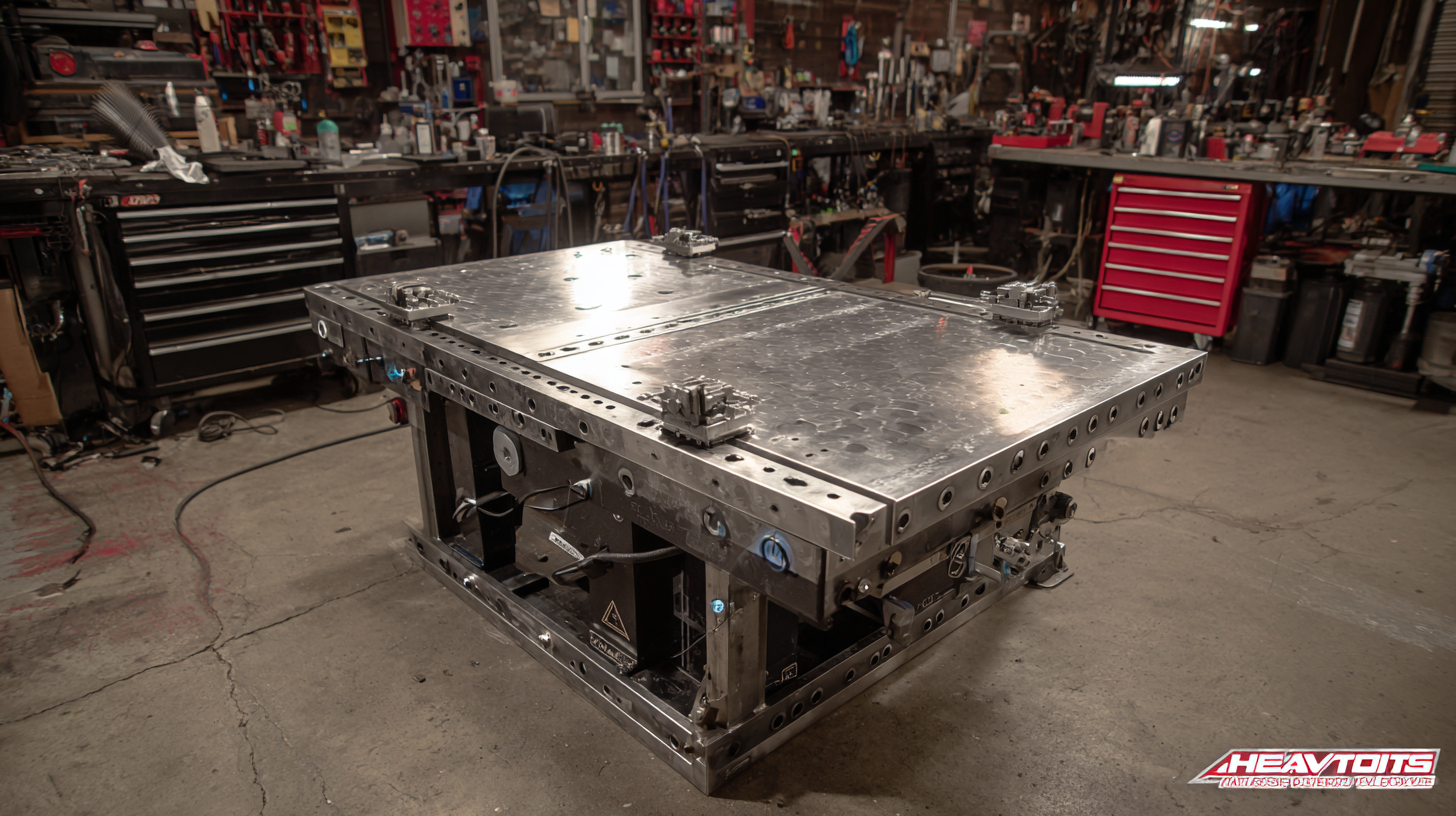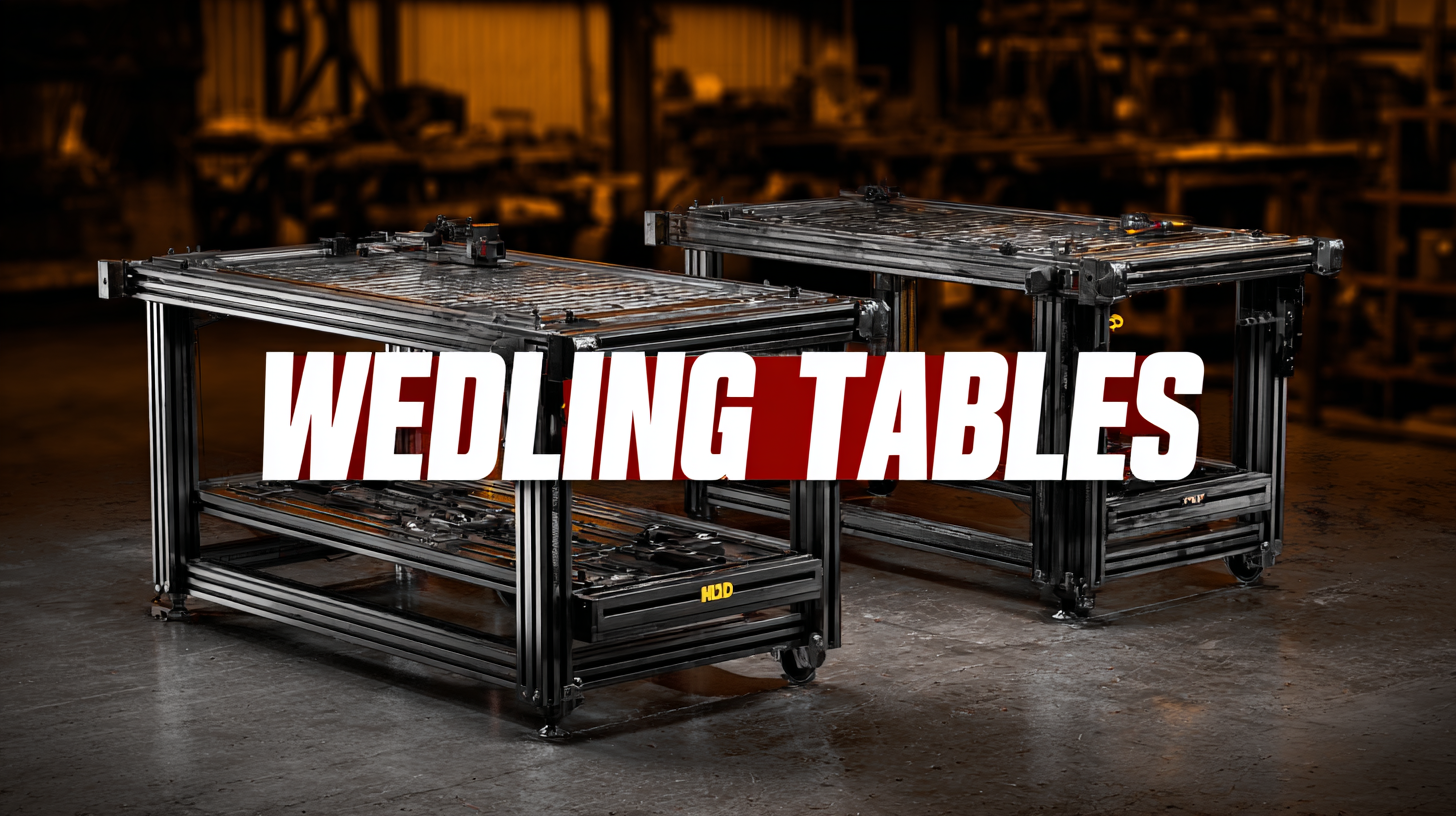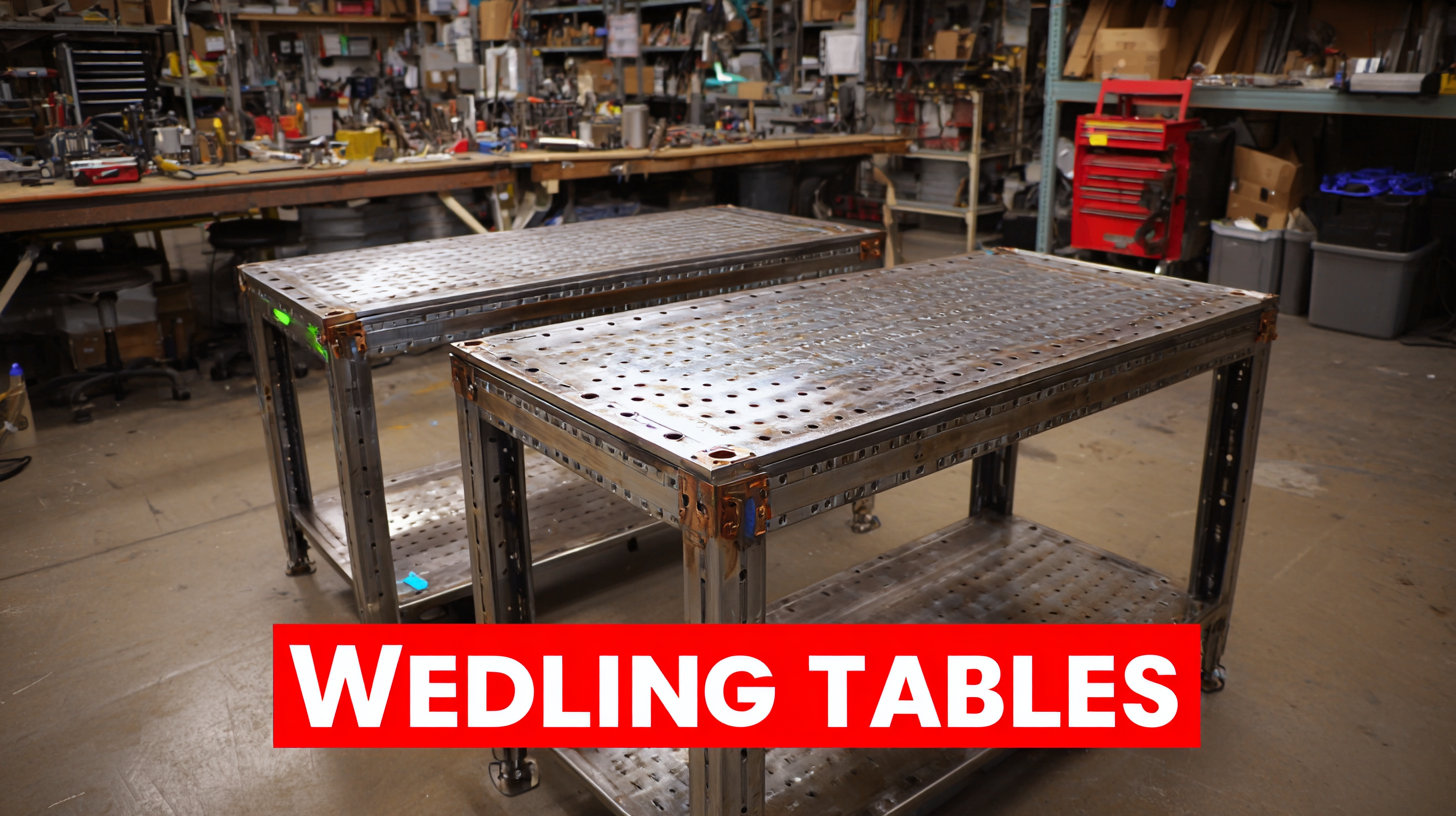

Investing in high-quality welding fixture tables is crucial for enhancing your production efficiency and precision in welding tasks. These specialized tables are designed to provide a stable and versatile platform for various welding applications, allowing for greater accuracy and consistency in assembly processes. In this blog, we will explore the key benefits of incorporating quality welding fixture tables into your operations, shedding light on how they can streamline workflow, reduce production errors, and ultimately lead to significant cost savings.

From improved ergonomics to increased adaptability for different projects, the advantages of these tables make them an indispensable asset for any manufacturing environment. Join us as we delve into the reasons why quality welding fixture tables are a smart investment for your production needs.
Investing in quality welding fixture tables can significantly reduce after-sales service issues, which frequently arise from inadequate tooling solutions. When the foundation of a welding operation is sound, the consistency and accuracy of welds improve, leading to fewer defects and rework. Quality fixtures enable precise alignment and support for parts, ensuring that the welds meet strict specifications and reducing the likelihood of customer complaints. This translates directly into lower warranty claims and less frequent service calls, ultimately enhancing customer satisfaction.

A well-designed welding fixture table also contributes to increased operational efficiency. By minimizing the variability in production processes, these tables help maintain a steady workflow and reduce downtime for adjustments or repairs. Additionally, investing in durable and reliable fixtures means less frequent replacements and repairs, further lowering long-term operational costs. The upfront investment in high-quality welding fixtures pays off in the form of fewer service issues and a more robust production environment, solidifying a company's reputation for reliability and quality in the industry.
When it comes to maintaining welding fixture tables, implementing cost-effective strategies is crucial for maximizing productivity and minimizing downtime. According to a report by the American Welding Society, businesses can save up to 30% in maintenance costs through regular inspections and timely repairs of their welding fixtures. This proactive approach not only extends the lifespan of the equipment but also ensures higher quality welds, which is essential for meeting industry standards.
Another effective strategy is utilizing advanced materials and coatings to protect the surface of fixture tables from wear and tear. A study published in the Journal of Welding Technology indicates that tables treated with high-performance coatings can withstand corrosion and abrasion up to 50% longer than untreated tables. This investment in quality finish not only reduces the frequency of maintenance but also enhances the overall efficiency of the production process, ultimately leading to increased profitability for manufacturers.

When it comes to maximizing productivity in manufacturing, investing in quality welding fixture tables is a game changer. Durable welding fixture tables provide a stable and precise platform for various welding operations, significantly reducing setup times and increasing the overall efficiency of the production line. With features designed for optimal performance, these tables ensure consistent weld quality, allowing for faster turnaround times and better end products.
One critical factor that influences the effectiveness of welding processes is the choice of shielding gas and activation flux. These elements affect the penetration and quality of the weld bead, particularly in specialized techniques like tungsten inert gas (TIG) welding. Using the right combination can lead to improved weld integrity and reduced defects, ultimately enhancing productivity.
Tips: Consider investing in adjustable welding fixture tables that can accommodate different workpieces. This flexibility allows operators to adapt quickly to changing production needs. Additionally, regularly assess the condition of your fixtures and replace any worn components to maintain optimal performance. Implementing these strategies can lead to significant improvements in your welding operations.
Investing in quality welding fixture tables not only enhances production efficiency but also significantly improves safety standards in manufacturing environments. According to the Occupational Safety and Health Administration (OSHA), improper welding setups are a leading cause of workplace accidents, contributing to over 50,000 injuries annually. Quality welding fixture tables provide a stable and organized work platform, minimizing the risk of falls and equipment-related accidents. By ensuring that all materials are securely positioned, these tables reduce the likelihood of unexpected movements that could lead to injury.
Furthermore, quality welding fixture tables often come with built-in safety features such as anti-slip surfaces and adjustable heights, addressing ergonomic concerns for welders. A report by the National Institute for Occupational Safety and Health (NIOSH) reveals that ergonomic hazards account for around 25% of workplace injuries in manufacturing. By investing in tables that accommodate ergonomic requirements, companies not only protect their employees but also enhance productivity. Ultimately, incorporating quality welding fixture tables into production lines lays the foundation for safer work environments, ultimately leading to improved overall performance and employee satisfaction.
This chart illustrates the impact of quality welding fixture tables on various safety and productivity metrics in production environments. The data highlights improvements based on several factors.
When it comes to enhancing your production efficiency, investing in customizable welding fixture tables should be at the top of your priority list. These tables offer the flexibility to adapt to various project requirements, allowing you to create tailored setups that accommodate unique components and welding processes. The ability to modify your fixture tables means that you can significantly reduce setup times, leading to increased productivity and optimized workflows.
**Tip 1:** When choosing a customizable welding fixture table, consider the materials and design that best suit your specific applications. A sturdy build can withstand heavy-duty loads while ensuring precise alignment, which is crucial for achieving high-quality welds.
Furthermore, these tables can be equipped with additional features such as adjustable height, integrated clamping systems, and modular grids. This level of customization not only improves the usability of your workspace but also ensures that you can easily adapt to new projects without the need for significant re-tooling.
**Tip 2:** Regularly assess your production needs and anticipated changes in your projects to determine the necessary features for your tables. This proactive approach can save time and costs in the long run, as it allows you to maintain efficient production even as requirements evolve.
| Feature | Description | Benefits | Potential Savings |
|---|---|---|---|
| Customizable Design | Tailored tables to fit specific production needs. | Increases efficiency and reduces setup time. | Up to 20% reduction in labor costs. |
| Durability | Made from high-quality materials for long life. | Lower replacement costs over time. | Savings of 15% on equipment replacement. |
| Stability | Provides a solid base for welding tasks. | Minimizes defects and improves product quality. | Reduction in rework costs, saving up to 10%. |
| Versatility | Can be used for various welding processes. | Adaptable to future project needs. | Avoids new investments for different projects. |
| Enhanced Safety | Designed with safety features to protect operators. | Reduces risk of accidents and injuries. | Potential savings on insurance and liability costs. |
